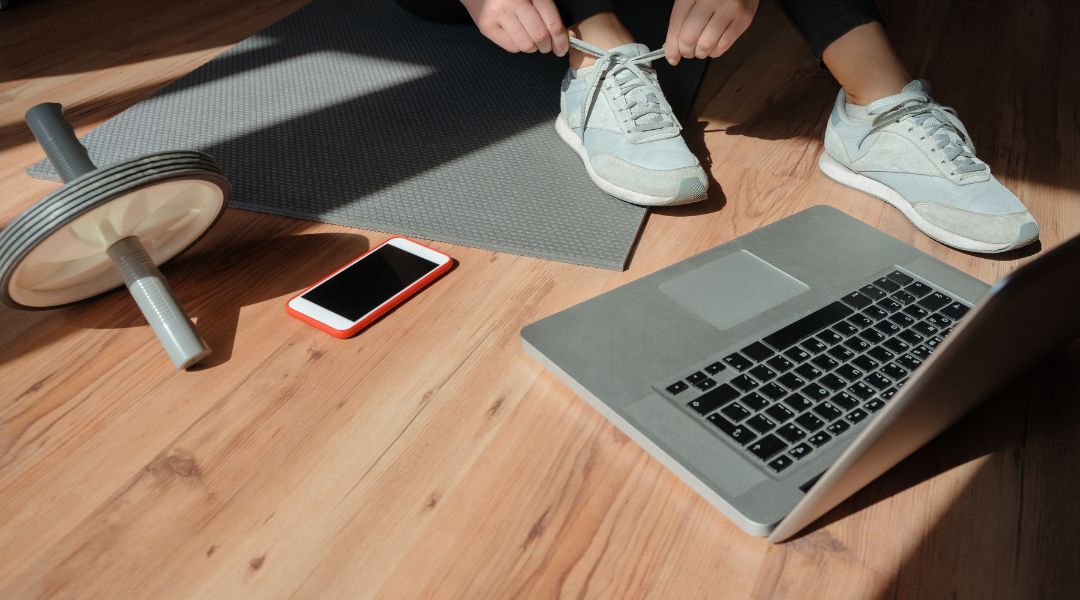- Launch Your Training Today! We're available 24/7 by Appointment Only.
- (615) 329-2747
- info@nextlevelfitness.com
How to Adapt Functional Training for Balance in Any Setting
How Long Does it Take to See Results With a Personal Trainer?
November 6, 2023How to Stay Motivated with Personal Training
December 1, 2023You’re eager to improve your fitness. Picture a method that’s adaptable, whether you’re at home or in the gym. This approach is called “functional training for balance.” It’s not just about lifting weights; it also incorporates strength-building exercises.
To improve coordination and enhance muscle function, key elements contribute to performing daily life activities efficiently. As we delve deeper into this subject, let’s learn how combining functional and strength training can help us achieve our goals.
Identifying Balance Requirements
To adapt functional training for balance in various settings, pinpointing specific balance requirements becomes vital. Think of it like preparing a dish; knowing the exact ingredients will help you create the perfect recipe. Similarly, recognizing what elements impact balance can enhance your workout routine.
First, understand that maintaining equilibrium involves several body systems working together harmoniously. These include your vision and vestibular system for sensory information about movements and spatial orientation, muscles and skeleton providing motor responses needed for coordination, and the central nervous system processing data from these diverse sources instantly.
Focus on activities during workouts that replicate everyday life. For example, climbing stairs or picking up groceries requires coordination between the brain, nerves, muscles, and perception. This same coordination helps with balancing exercises.
By isolating exercises around such ordinary tasks performed every day, but this time with an added emphasis on calculated motions along with adequate resistance, you may reduce the likelihood of toppling over while simultaneously improving overall practical power.
Creating a Balanced Workout Plan
Creating a well-rounded workout doesn’t have to be challenging. Your ultimate objective should focus on developing a fitness regimen that covers all essential muscle groups without leaving any important areas untouched. It’s crucial to remember the need for balance in your approach.
People often train their favorite muscles or those they excel at working out. However, this strategy can lead to disproportionate bodies and potential weaknesses. Instead, strive for an evenly distributed exercise program: one that prioritizes both upper- and lower-body workouts equally as part of your regular sessions.
Not only will you enjoy greater overall strength but also improved functionality. This is critical if you’re aiming for sustained health in the long term. Additionally, it is worth considering including flexibility exercises in your routine. These will help keep your joints healthy and reduce the risk of injury associated with more rigorous workouts.
Utilizing Exercises for Stability
You have a powerful tool at your disposal for enhancing stability: functional exercise. Muscle groups work in sync during these workouts, much like they do in real-life movement patterns. The focus isn’t solely on strength; control and balance also come into play.
Engage your core muscles first to stabilize the body when doing an exercise with weights or resistance bands. For instance, you might try seated rowing exercises that require maintaining a steady posture while pulling on handles attached to weight stacks.
Gradually adjust the resistance level over time to challenge your ability levels without straining yourself too quickly. Doing this will make minor adjustments instead of rapid large motions, which will have a positive effect on force steadiness. This can be measured by the natural log of the variation coefficient.
Exploring Variety in Training Locations
While training in a familiar environment suits many, you might want to add variety to your regimen. Imagine swapping the confines of a gym for an open park. You’re not just switching sceneries. It turns out that adapting exercises to different locations can work new muscles and further challenge balance.
Changing surroundings means adjusting to uneven ground or varied terrain. From grassy knolls at parks to sandy beaches and forest trails, each offers unique challenges that test stability differently than flat floor surfaces do.
This spontaneous adaptation forces you deeper into functional fitness territory. Also, consider taking advantage of outdoor elements like benches or steps for explosive jumps or step-ups. They present unexpected obstacles instrumental in stimulating quick reaction responses crucial for enhancing body equilibrium control.
Remember, though, safety remains paramount! Always inspect any improvised equipment before use! Explore diverse locales as part of your balanced workout routine and broaden beyond conventional settings.
Incorporating Balance Equipment
Incorporating balance equipment into your workout can significantly enhance stability and core strength. Balance boards, BOSU balls, or wobble cushions provide an extra challenge to functional training routines. Performing plank exercises on these unstable surfaces forces engagement from the deep muscle fibers of your core.
Balance discs are another excellent addition. When placed under one foot during unilateral workouts like lunges or squats, they create instability that triggers the stabilizing muscles around joints. Resistance bands elevate this task further by creating additional tension for muscle groups to work against.
Another tool worth considering is a Swiss ball. When used correctly, it encourages better posture, adjusts body alignment, and strengthens delicate back muscles, which support spinal health and overall mobility.
However, remember not to rush but to gradually integrate these tools into your sessions while ensuring correct form with each exercise you undertake.
Monitoring Progress and Adapting
Monitoring progress is a crucial part of your functional training program. Regular checks allow you to adjust exercises based on performance, ensuring continuous improvement. Use tools such as fitness trackers or mobile apps to document workouts. They provide invaluable data that can inform changes.
When adapting training routines, consider the environment. Changing locations occasionally offers variety and challenges to balance in fresh ways while maintaining engagement. Adaptation also entails modifying exercises according to capability levels. If an exercise becomes easy over time for you, it signifies strength growth, and it’s high time to increase intensity or complexity.
However, do so gradually to avoid risking injury by sudden leaps in difficulty level.
Never neglect the monitoring process. It is important to be patient when implementing a functional training plan for enhanced balance skills in any setting, such as a gym, home, park, beach, or office. Timely adjustments are also needed, so don’t delay tweaking the regimen when necessary.
So, you’ve decided to prioritize balance through functional training. Remember that Next Level Fitness encourages a tailored approach for each individual. Don’t be afraid to modify exercises in any setting, whether at home, the gym, or outdoors. Try variations suited to your personal needs while always respecting safety measures!
With determination and consistency, you can expect an improvement not only in balance but also in overall strength and stability.
Warning: Trying to access array offset on value of type null in /var/www/wp-content/themes/betheme/includes/content-single.php on line 286




